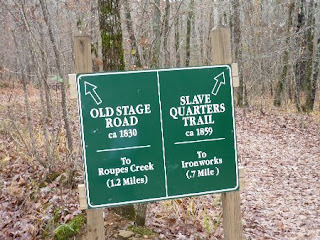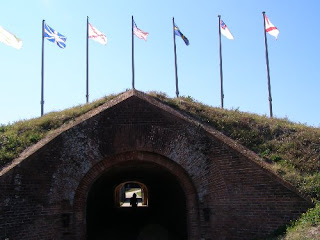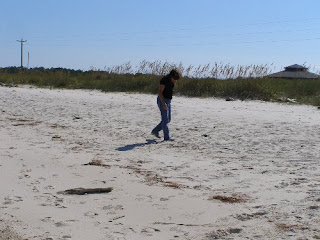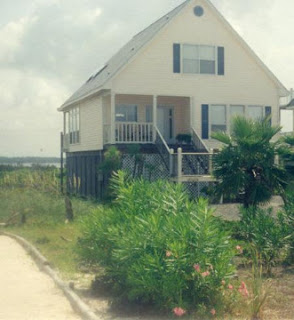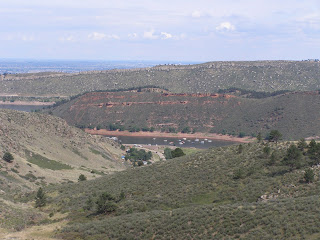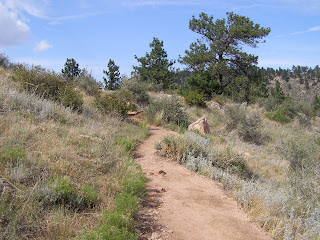
Tannehill State Historical Park covers 1500 acres, dipping into the edges of three Alabama counties - Jefferson, Tuscaloosa, and Bibb. Most of the park has been left in its natural state. On even short hikes it is possible to see whitetail deer and raptors. Ducks, squirrels, and small birds are always nearby. All of the wildlife that is native to this part of Alabama are within the boundaries of the park, but most of it will sense you before you see it. On this trip we spotted a small deer drinking from a creek as soon as we entered the park. A few minutes after we parked the car, we saw a red-tailed hawk.
There is a nice restaurant in the park, but it was closed on this visit. A candy and ice cream store and a small old fashioned grocery store are also in the park.

Tannehill is very popular with campers. We visited on the Sunday after Thanksgiving and there were very few campers. The campgrounds can be very crowded, especially during the summer and most holidays.
For the kids there is a miniature railroad that runs from near the park entrance to the Trade Days area.
Many people like to visit the park during Trade Days, which is a giant flea market at the far east end of the park. Trade Days are March until November, third weekend of the month. I personally don't like Trade Days or any other of the times where the park is crowded. The less people, the better for me. But if you enjoy history and nature more than crowds, most of that part of Tannehill is never crowded once you get past the parking lot. Walk about a mile or two downstream, and it is very possible to leave everybody else behind.
Just past the furnaces is a rock bluff that overlooks the creek. The views are beautiful.


There are hiking trails of varying lengths in the park. All of them offer great scenery. Most of them follow or link up with pretty creeks.
The main attraction at Tannehill is the remains of furnaces that supplied the Confederacy during the Civil War. Much of them have been reconstructed. At peak production Tannehill was producing twenty tons of iron a day that was made into everything from pots to cannonballs. On March 31, 1865, during the last days of the war, production came to a sudden halt when three companies of the Eighth Iowa Cavalry attacked. When the fighting stopped the furnaces were in ruins and the supporting structures were burned to the ground.



The furnace site is listed on the National Register of Historic Places and the Civil War Discovery Trail. The furnaces have also been designated an international landmark by the American Society for Metals.
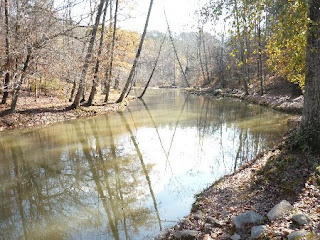


Near the Trade Days area, on Mill Creek, is a working grist mill. The original mill that was located here was built in 1867. This area is very popular with photographers because of its beauty.



